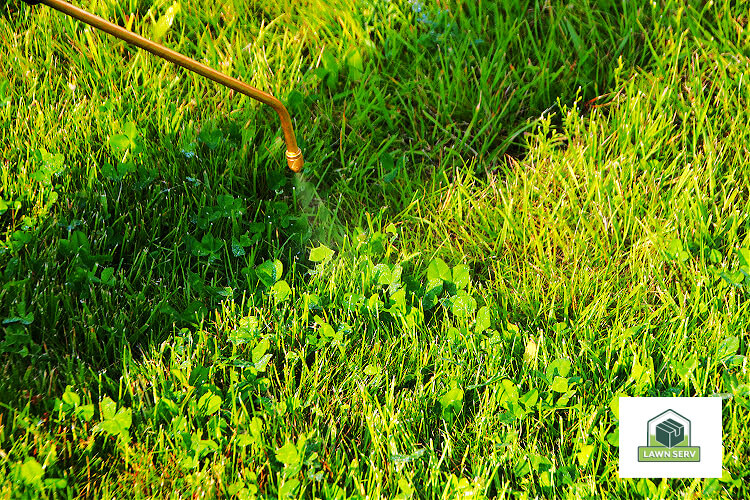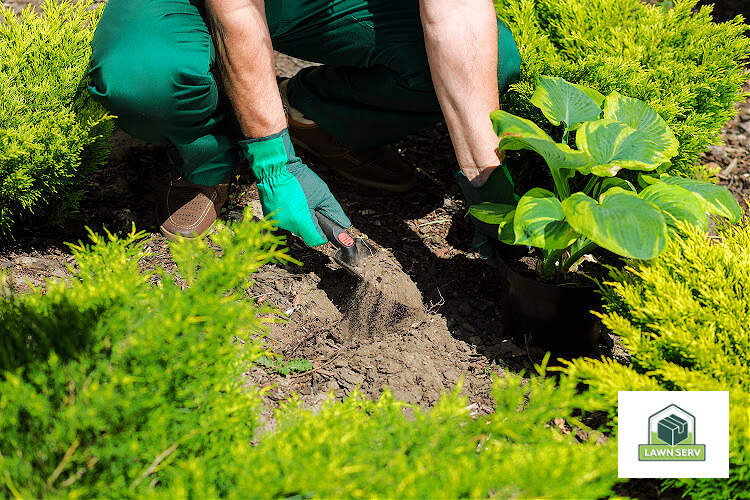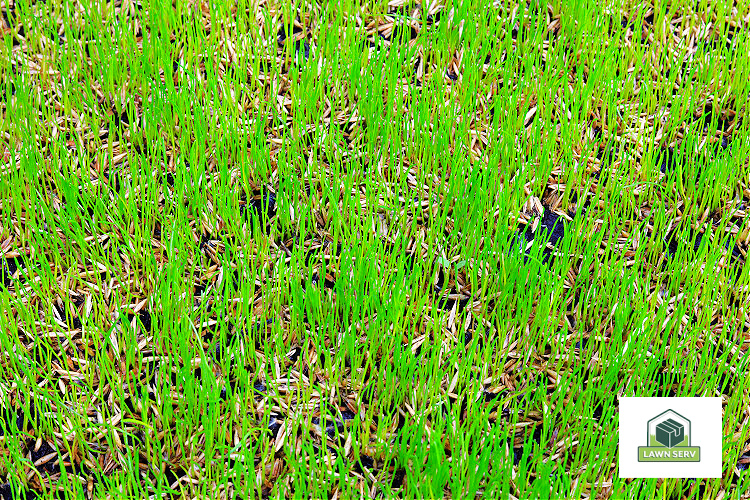
Let's be honest, how to reseed dead spots in your lawn isn't exactly the topic you'd bring up at a backyard barbecue. But those unsightly patches of brown grass are quite an eyesore, aren't they? Like that awkward moment when you spot spinach stuck in someone's teeth but don't know how to tell them.
We've all been there – gazing out our window at the once lush green landscape now marred by bare areas. You experience a stab of remorse for disregarding what had once been your source of pride.
I remember my first run-in with these pesky lawn problems. My fairway had transformed into a patchwork quilt overnight! I felt defeated, but then I realized - this is not rocket science; it's just dirt and seeds!
Let's take on this challenge and explore the possibilities together. We'll identify causes, delve into their roots, and then craft strategies to tackle them head-on. So buckle up!
Table Of Contents:
- How to Reseed Dead Spots in Your Lawn
- Identifying the Causes of Dead Spots
- Preparing Your Lawn for Reseeding
- Choosing the Right Grass Seed
- Reseeding Dead Spots in Your Lawn
- Caring for Newly Reseeded Areas
- FAQs in Relation to How to Reseed Dead Spots in Your Lawn
- Reseeding Your Lawn: Your Complete Guide
How to Reseed Dead Spots in Your Lawn
Reseeding your lawn only involves two easy steps:
1. Preparing your lawn
2. Choosing the best seed and sowing them on the best time
Dead spots are like lawn acne, marring the lush green beauty of your turf. They're often patches of dead grass or bald areas that stand out against surrounding healthy blades. Let's explore each step in detail as well as all the things you need to know about reseeding dead spots in your lawn.
The Impact of Dead Spots on Your Lawn

Beyond being an eyesore, these brown spots can indicate a deeper lawn problem. Unaddressed, they could expand and impact the overall health and appearance of your yard.
Common Types of Lawn Dead Spots
Brown patch is one common type, caused by fungus thriving in hot humid weather. Dog spots are another culprit - concentrated urine burns the grass leaving unsightly dead patches behind.
No matter their cause though – be it doggie damage or disease – you'll need to address these bare spots head-on if you want to maintain a vibrant green lawn. And for those especially stubborn issues? LawnServ's team of experts has got you covered.
Identifying the Causes of Dead Spots
The presence of dead spots in your lawn can be a result of various factors. Two major culprits are grub damage and fungal diseases.
Grub Damage and Fungal Diseases
Lawn grubs, which are beetle larvae, feast on grass roots causing brown patches to appear. Grubs often attract critters like skunks who dig up the lawn for a meal making matters worse.
Fungal diseases such as Brown Patch or Dollar Spot can also lead to large areas turning yellow or brown. In sultry, muggy weather, these fungi can spread swiftly if not addressed promptly.
Effects of Poor Soil and Dog Urine
Poor soil lacking essential nutrients inhibits healthy growth leading to bare spots over time. Soil testing will help identify any deficiencies that need addressing with specific lawn care products.
Dog urine is another common cause due to its high nitrogen content burning the grass similar to an overdose of fertilizer resulting in unsightly dead patches.
Preparing Your Lawn for Reseeding

To give your lawn a fresh start, removing debris is key. Using a garden rake helps to clear out dead grass and leaves.
Once the area is clean, tackle soil compaction with core aeration. This process lets air, water, and essential nutrients penetrate into the root zone of your grass.
A study found that raking significantly improves patchy areas in lawns (The Spruce). It also showed how using tools like hard-toothed lawn rakes or garden cultivators help enhance compacted soil conditions.
Mowing Before Reseeding
Prior to reseeding, mow the surrounding grass low but without scalping it. This ensures new seedlings won't have to compete for sunlight and will get off to a good start.
Checking Soil Health
Analyze your soil's health before proceeding with reseeding; adding organic matter can improve nutrient content if needed. If you're unsure about this step, ask professionals at Lawnserv who are always ready to assist.
Choosing the Right Grass Seed
Picking the right grass seed is vital to ensure your lawn thrives. Your region and micro-climate play a big role in this decision. Seeds from different grass plants perform differently based on these factors.
The key is keeping your seeds moist so they germinate properly. How fast or slow a seed germinates can vary, but using a good mix that includes perennial ryegrass could give you quick results because of its rapid germination rate.
A balanced blend ensures each grass depends on the other for growth and sustenance, helping maintain lush green even when some species struggle. Using a seed accelerator can also help keep the seed moist until it takes root.
To spread evenly across bare patches, use an appropriate tool or method suitable for your chosen grass type - this helps make sure every inch gets covered effectively with seeds.
Reseeding Dead Spots in Your Lawn

To turn brown patches of grass into a lush green lawn, it's essential to spread seed evenly across the affected area. The process is pretty straightforward but requires careful attention to soil conditions and growing conditions.
The Process of Reseeding
You need to start by preparing the dead areas for new growth. Use a rake or garden tool to scratch up the soil surface where you plan on reseeding. This helps ensure that young roots can easily penetrate and establish themselves within your existing turf.
Research shows that lightly scratching seeds into loosened soil makes sure they're making good contact with dirt, giving them a better chance at successful germination.
Best Time for Reseeding
Late summer through early fall is generally considered an optimal time to repair grass spots as this gives newly sown seeds enough time before winter hits. Established grass also tends not to compete as fiercely during these months, providing your new sprouts a fair shot at life.
For more info on the best time to reseed your lawn, check out our comprehensive guide: Lawn Care DIY - The Best Time to Plant Grass Seeds
Caring for Newly Reseeded Areas
Once you've reseeded those pesky dead spots in your lawn, the real work begins. Caring for newly seeded areas isn't rocket science but it does require some attention to detail.
Maintaining Moisture and Monitoring Growth
To give seeds a good start, keep the soil consistently moist. But don’t drown them. Too much water can cause seeds to wash away or rot. A light sprinkling twice a day should do the trick until grass blades reach about an inch tall.
Larger areas might need more love. Consider asking help from a lawn care professional. These folks have seen it all when it comes to green lawns and know just what your patch needs.
Preventing Damage From Traffic
Your new sprouts are like babies—they’re delicate. Keep foot traffic to a minimum on these parts of your lawn until they're well-established (think: inches tall). Late summer is also prime time for growth so avoid any major yard activities during this period if possible.
FAQs in Relation to How to Reseed Dead Spots in Your Lawn
Can I just throw grass seed on bare spots?
You can, but you need to prepare the ground first. Loosen up the soil and remove any debris before spreading seeds for better germination.
Can I just put grass seed over dead grass?
No, rake away dead grass first. It obstructs new seeds from reaching the soil which they need to grow properly.
Will grass regrow in dead spots?
Sure, with proper care like reseeding and watering, these patches will bounce back into lush green areas again.
What can I put on dead spots in my lawn?
Besides seeding them afresh, adding a layer of topsoil or compost boosts your lawn's health as it reintroduces nutrients.
Reseeding Your Lawn: Your Complete Guide
Reseeding those dead spots in your lawn doesn't have to be a headache. It's all on you now - the what, why, and how are done.
You learned that dead spots can stem from various sources like grub damage or poor soil conditions. Identifying these culprits is key.
Remember the importance of preparing your lawn before reseeding: removing debris and loosening compacted soil are vital steps for success.
Picking the right grass seed based on your region and micro-climate is another crucial aspect we discussed. Get this right, and you're off to a good start!
We also walked through each step involved in how to reseed dead spots in your lawn, including when's the best time (hint: late summer or early fall).
Caring for newly seeded areas involves patience but pays off with lush green results. Stick with it!
For more easy lawn care tips for a greener yard, check out these articles:
How to Professionally Mow Your Lawn


